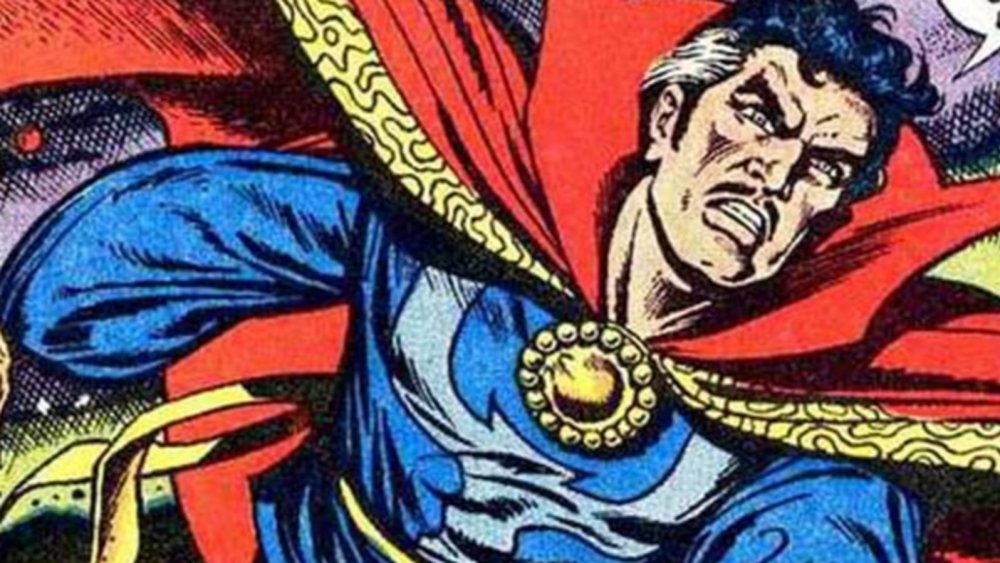The Doctor Strange Problem That Stan Lee Wanted To Retract
The world of comic books hosts some of the most creative minds in all of history, but none can hold a candle to the legendary Stan Lee. The mastermind behind the likes of the Fantastic Four, Spider-Man, and The Incredible Hulk, among countless others, "Stan the Man" contributed so much to pop culture in his 95 years of life. Still, for as amazing as his heroes and stories were, it wouldn't be fair to ignore the quality of his character, since he was one of the kindest, most positive and mindful creators of his time. Of course, those adjectives didn't land solely on Lee's personal life, often bleeding over into his professional one and leading him to make important choices for his readers.
A fine example of Lee's considerateness came during a comic run of his and Steve Ditko's, most popular characters — Doctor Stephen Strange. The Sorcerer Supreme made his debut in July 1963 in issue #110 of the Strange Tales anthology series and quickly picked up steam as one of Marvel Comics' hottest commodities heading into the 1970s. After a successful solo series and a handful of appearances in the Marvel Feature title, Strange was made a part of writer Steve Englehart and artist Frank Brunner's Marvel Premiere run, in which some suggestive story points led to Lee attempting to step in and play damage control for the sake of his readers.
Stan Lee wanted to make sure he didn't offend Marvel's religious readers
In the aforementioned Marvel Premiere story, an evil sorcerer from the 31st century named Sise-Neg attempts to travel backward through time to consolidate magical power across the cosmos. Naturally, the only individuals equipped to deal with such a threat are Doctor Strange and his arch-rival, Baron Mordo, who form a shaky alliance to stop their common enemy. As they try to stop him, they make it back to the beginning of time, where Sise-Neg reaches the peak of his magical abilities and uses them to rebirth the entire universe. This sounds like pretty typical comic book shenanigans, and certainly not anything out of the ordinary for a Doctor Strange adventure.
The story itself, however, wasn't the problem, but rather the implication that it made. The issues made it appear as though Sise-Neg, or Genesis, backward, was actually a representation of God, which, understandably, wouldn't sit well with those deeply involved in real-world religion. In an interview with TwoMorrows, Frank Brunner recalled that Lee, wishing to avoid offending any of Marvel's religiously-inclined fans, "Wrote us [Brunner and Englehart] a letter saying, 'We can't do God. You're going to have to print in the letters column a retraction saying this is not 'the' God, this is just a god.'"
Instead of going along with what Lee requested of them, Englehart and Brunner found a rather disingenuous workaround to save their issue. The two, "Wrote a letter from a Reverend Billingsley in Texas, a fictional person, saying that one of the children in his parish brought him the comic book, and he was astounded and thrilled by it, and he said, 'Wow, this is the best comic book I've ever read.' And we signed it 'Reverend so-and-so, Austin Texas.'" They then mailed the fake letter to Marvel, who ultimately decided to print that in the next issue in place of the retraction.
At the end of the day, even though he was duped by his own staff, Stan Lee just wanted to do right by his readers from all walks of life. He understood the appeal of his creations, including Doctor Strange, and wanted to ensure his and Marvel's work didn't rub anyone the wrong way, adding to his reputation as one of the most audience-centric writers to ever live.

